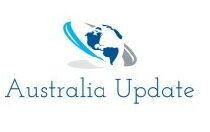Water technology Sydney comes in different types and designs. Different industries such as the pharmaceutical industry rely on pure water to do various things such as the manufacture of life-saving drugs. This means that water treatment systems and technologies are an important investment and should conform to the highest quality and safety standards.
It is, therefore, important to protect your investment and ensure the smooth functioning of your treatment systems. We have pulled tother a few common mistakes you need to avoid to get the most out of your treatment system.
Not matching the produced water with the need
It is a waste of resources to use pure or purified water for underserving uses. For example, using purified water to irrigate your garden might be a waste of resources because you don’t need pharma-grade water for such uses. Water used for washing, drinking and other utilities should be between 10 µS/cm and 50 µS/cm as long as the water is RO purified.
Relying solely on the 5, 10 – micron filters to remove total suspended solids
It is important to understand that 5-micron filters used in RO may be adequate for a well water source that has little or no total suspended solids but they can’t be expected to reduce the water’s SDI and perform the job of the ultrafiltration skid.
This is a common technique you can use to reduce costs that prove to be extremely expensive in the long term. SDI will choke the reverse osmosis membranes and shut down the water technology purification system. Also cleaning the reverse osmosis membrane frequently will reduce the life of the membrane.
It is important to identify the right SDI content in the water. This is critical and inevitably overlooked in most water content analysis reports. In case the water comes from groundwater or a surface water source, chances are you will need UF and even multimedia filters prior to the UF.
Believing the myth of operator-free water systems
It is important to understand that water treatment systems at any automation level require trained operations and maintenance experts to ensure the equipment functions correctly. It is important for the operators to be knowledgeable about how the treatment equipment works and how common problems can be identified.
It only takes a few hours without the antiscalant or scale inhibitor chemical to irreparably damage membranes. People who are well trained will know how to tread flow rates, equipment pressures, and conductivity to anticipate the need to properly clean the membranes. This saves expensive membrane replacement.
When it comes to water technology Sydney, both ion exchange and RO systems require handling chemicals so it is important for personnel to know how to safely handle them. Ion exchange equipment regeneration is a critical time and you are often a valve away from a major problem. Training is a very small investment but the returns are huge. The operator should maintain proper log books when operating the water treatment system which helps with the correct identification of where and when the problem occurred and what corrective steps can be taken.



